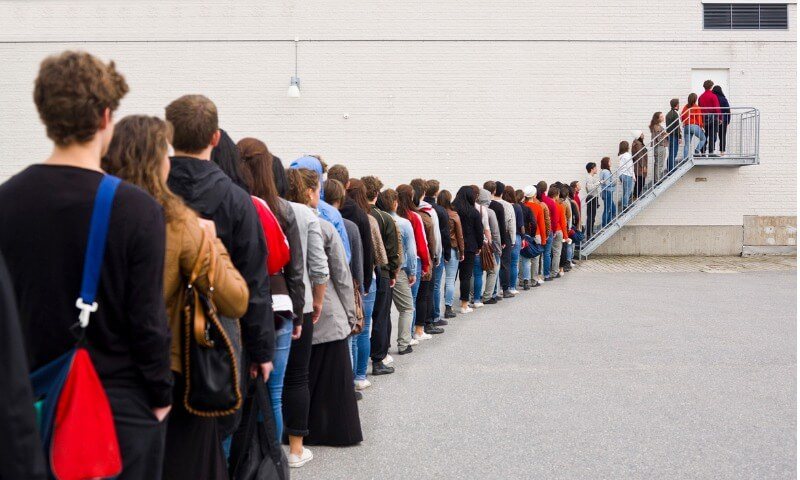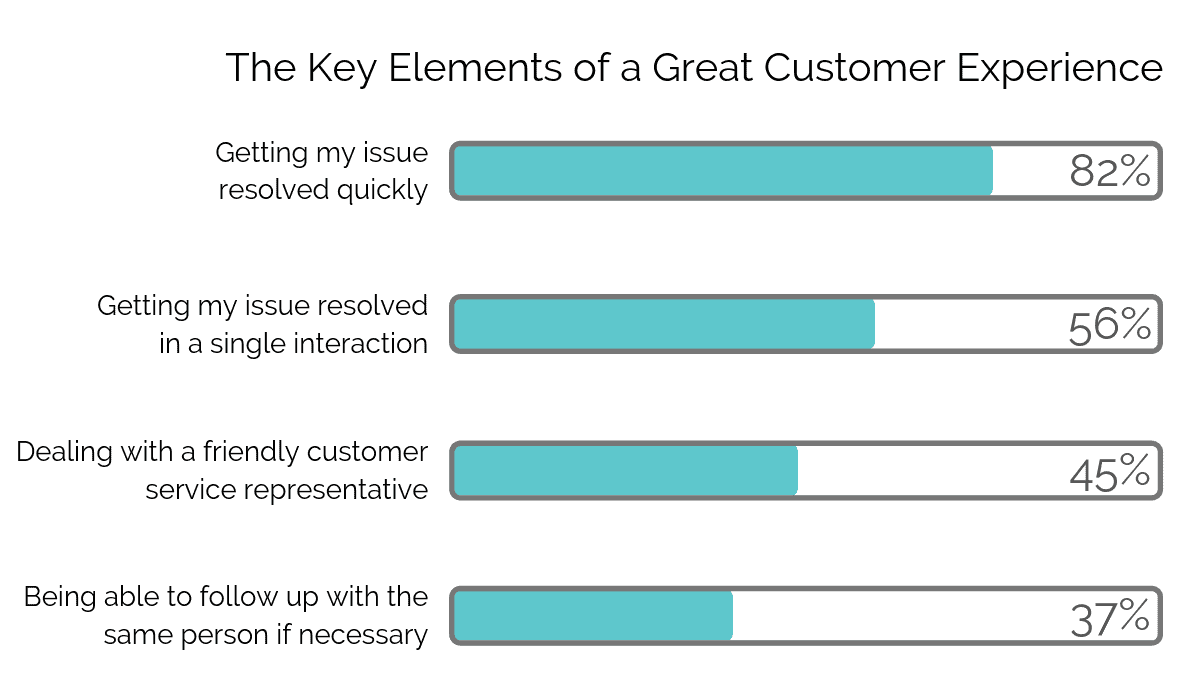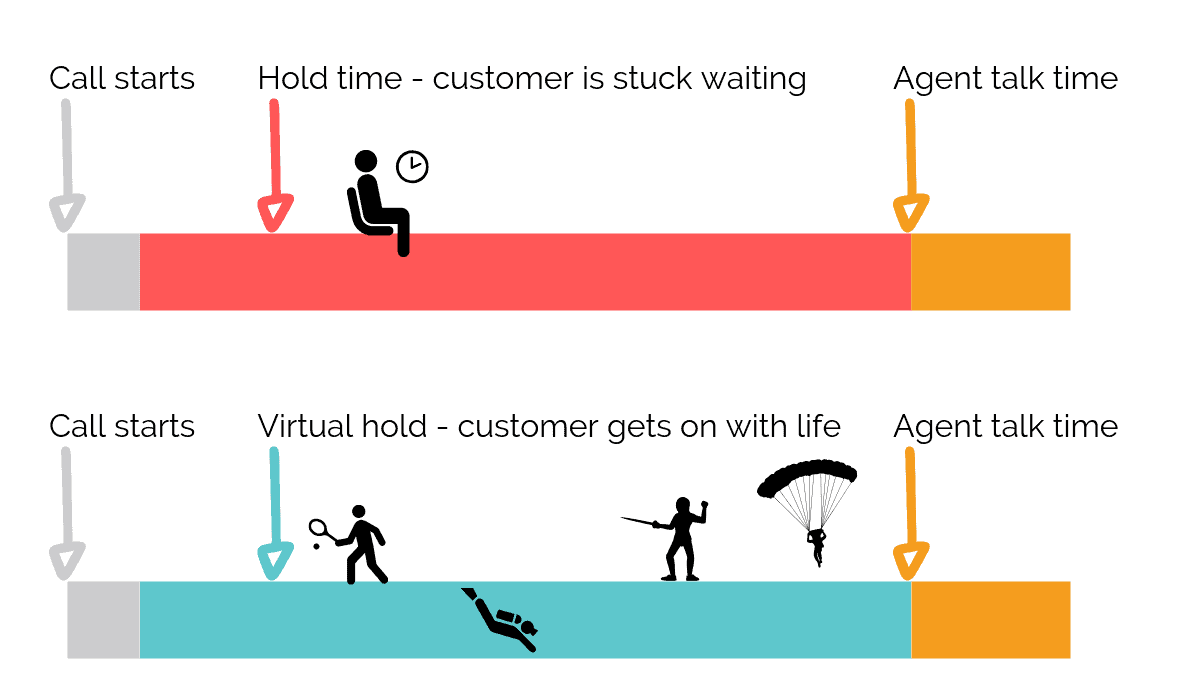Customers hate waiting. Of course they do. They didn’t want to call in the first place. But long queues don’t have to be a fact of life for the inbound call center. Is it possible to get rid of waiting?
Customers pick up the phone because something went wrong, and they want it fixed – quickly.
It’s no use telling them about your high call volumes. They don’t care how much their call matters to you. They just do not want to wait.
But what can you do about it? Employ twice as many agents? That idea won’t get far in the board room.
Simple solutions for the inbound call center
As always, the simplest solution is the best. Just invite your customers to hang up.
No really – get them to hang up the phone… and call them back when an agent is free.
Let’s think about the problem a bit. We know callers don’t like waiting, and that over 70% of them get ‘extremely frustrated’ on hold.
Extreme frustration is not the emotion we want from customers. So what’s behind this negative feeling?
Calling your inbound call center feels like…
Picture yourself going to the post office. They tell you that your mail matters to them. They tell you that they’re experiencing a high volume of people sending packages right now.
Then they lead you into a dark room. Opus Number One is playing through a bad speaker. You’ll have to wait there while an unknown number of people are served before you.
Does it sound crazy? Or does it sound familiar?
You can fix it
When you think about the hold experience like that, it’s clear that the wait time isn’t the only issue. In fact, it might not even be the main issue.
All that frustration comes from having our time wasted, and not being able to do anything about it.
That’s why callbacks are by far the best option for a contact center.
If the customer hangs up before reaching an agent, it should be because they have confidence in you to call back promptly. It should not be because they’re giving up hope, yet some research puts average abandon rates as high as 20%.
What tech is available?
There are plenty of products that make callbacks (aka virtual queuing) possible for the inbound call center.
And a lot them of them are very flawed.
There are two big issues with most virtual queuing products:
- Callbacks are the only thing they can do
- There’s no flexibility in how they do it
The first problem is pretty self-explanatory. If you spend money fixing a single part of your call center, how will you solve the next problem? Buy another sticking plaster?
The second problem – lack of flexibility – can do even more damage. There’s usually a lot going on in an inbound call center, meaning a lot to factor in to when you place a call.
You need a way to build in an intelligent way to decide when to offer callback and when to offer an alternative.
The products are too basic
Some callback systems use only the most basic methodology to decide when callbacks are offered and when calls are placed. For example, some place outbound calls when call volume sinks to a certain level – whether that’s in five minutes or five hours.
Others can only schedule for a fixed slot, as in ‘we’ll call you at three pm’ – regardless of volume at or before that time. (And bad luck if there are no agents available at three pm.)
Are there any better options?
The best tech for virtual queuing is tech you already know. You only need the ability to join them up.
That means you need:
- APIs, to integrate systems like CRM and IVR with an outbound dialer
- Automations that populate your call list with the customers who have requested a callback
- Automations to reschedule calls, look up availability and update the other systems
Put simply, the ‘integration’ part lets an integrated outbound dialer place the calls it needs to. The ‘automation’ part tells it how to do that.
(Ready to learn more about how APIs rapidly join up your systems? Read ‘How do APIs enhance contact center services?’)
But my inbound call center already hits 80/20…
Good for you. Let’s open the champagne and call it a day.
Or
Let’s ask a few questions about the value of 80/20
80/20 has been a staple of the inbound call center for decades. Why? Nobody knows. The 80/20 SLA is basically the Stonehenge of the call center industry. We don’t know where it came from, it has no clear purpose and it’s been falling apart for a while.
Bad SLAs cover up problems
Eighty per cent might sound fine – but do you know what happened to the other 20%?
And, because it’s an average, you also have to think about what intervals you measure. If you hit 80/20 today it’s likely that over a third of callers waited more than three minutes at peak times.
Likewise for agents in different skill groups – if they collectively hit SLA, what answer time is the lowest performing group offering?
The bottom line
Here’s the one thing you need to remember: 75% of customers find the idea of a callback ‘highly appealing’. A zero waiting approach won’t be a hard sell for them, and it doesn’t need to be hard to implement either.
One reason call centers have been nervous is the cost of outbound calls. But the cost saving of a zero waiting model is actually enough to finance a host of other CX projects.
With deeply integrated systems in place, zero waiting is totally automated – for agents, the process is exactly the same as any other call.
So you can
- Improve CX
- Slash abandoned calls
- Get light years ahead of your current SLA






